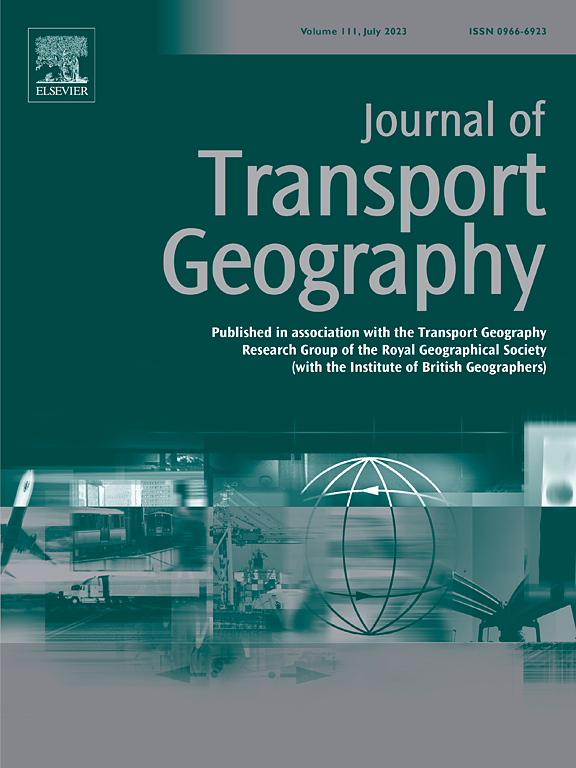Do residential areas require shared parking? A case study of Tianjin, China
IF 5.7
2区 工程技术
Q1 ECONOMICS
引用次数: 0
Abstract
Shared parking has shown great potential in alleviating the shortage of parking spaces, particularly within residential areas with high parking demand. However, studies on shared parking's effectiveness in meeting nighttime parking demand remain limited. This study investigates whether shared parking facilities, integrating existing resources, can effectively alleviate nighttime parking shortages in residential areas. Using empirical data from Tianjin, China, the spatiotemporal patterns of potential shared parking demand are analyzed. The research results indicate that approximately 70 % of nighttime shortages in residential areas can be addressed through shared parking resources provided by surrounding buildings. Additionally, this study explores the nonlinear relationship between the built environment and shared parking demand, providing a quantitative analysis. Explainable machine learning techniques reveal that the built environment factors have obvious nonlinear effects and threshold effects on demand for shared parking. The important thresholds that significantly affect the demand for shared parking vary across different built environment factors. The identification of these threshold values can be beneficial for providing tailored policy to integrate existing parking facilities into shared parking, aligning with varying resource availability and residential area demands.
住宅区需要共用停车场吗?以中国天津为例
共享泊车在纾缓泊车位短缺方面显示出巨大潜力,特别是在泊车需求高的住宅区。然而,关于共享停车在满足夜间停车需求方面的有效性的研究仍然有限。本研究探讨整合现有资源的共享停车设施能否有效缓解居民区夜间停车短缺。以天津市为例,分析了潜在共享停车需求的时空格局。研究结果表明,通过周边建筑提供的共享停车资源,约70%的居民区夜间停车短缺问题可以得到解决。此外,本研究还探讨了建筑环境与共享停车需求之间的非线性关系,并提供了定量分析。可解释的机器学习技术表明,建成环境因素对共享停车需求具有明显的非线性效应和阈值效应。在不同的建筑环境因素中,显著影响共享停车需求的重要阈值有所不同。确定这些阈值有助于提供量身定制的政策,将现有停车设施整合到共享停车中,以适应不同的资源可用性和住宅区需求。
本文章由计算机程序翻译,如有差异,请以英文原文为准。
求助全文
约1分钟内获得全文
求助全文
来源期刊

Journal of Transport Geography
Multiple-
CiteScore
11.50
自引率
11.50%
发文量
197
期刊介绍:
A major resurgence has occurred in transport geography in the wake of political and policy changes, huge transport infrastructure projects and responses to urban traffic congestion. The Journal of Transport Geography provides a central focus for developments in this rapidly expanding sub-discipline.
 求助内容:
求助内容: 应助结果提醒方式:
应助结果提醒方式:


